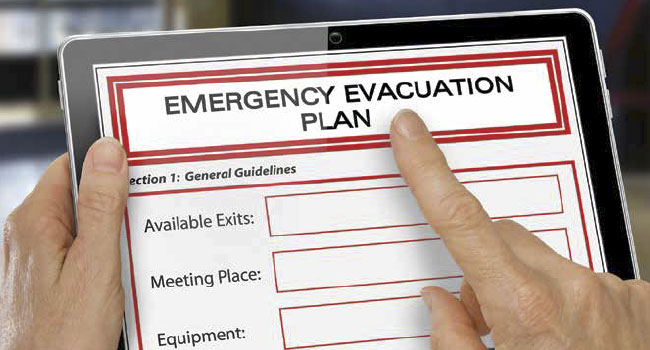
Getting Out Safely
Four ways to improve your plan already in place
- By Karen Evans
- Jan 05, 2016
School safety and security concerns continue to drive planning activity across the sountry, while similar plans are being created by hospitals, government and retail locations. Many of these plans include the concept of a "lockdown" situation to twart an intruder or attacker, and protect the occupants from harm.
What to do after a lockdown has been initiated is an equally important
part of the plan. During a lockdown, first responders and authorities
on the scene work to confirm and contain the threat, and then to
neutralize it. Depending on the specific circumstances, they may take
action to evacuate some or all occupants to safety while the threat is
still active or when the threat has ended.
How lockdowns and evacuations are handled depends largely on
planning and practice. Officials must have a solid plan in place, effectively
communicate that plan to teachers, students, first responders
and other stakeholders, and conduct drills periodically to ensure that
proper procedures are followed in an actual emergency situation.
There is no “one size fits all” protocol for lockdowns and evacuations
that works for every school or organization. Each plan must reflect
differences in building layout, proximity to other buildings or residences,
the capabilities of local first responders, and much more.
In developing an evacuation plan, there are four key elements leadership
can include to improve the plan’s effectiveness.
COLLABORATION WITH LAW ENFORCEMENT
It is vital to consult with local law enforcement officials for advice on
crisis planning and to get a firm understanding of their processes for
evacuation or clearing a location. These individuals can be a valuable
resource for developing an effective plan, as they have been through
extensive training specifically for these situations, including best practices
for evacuation.
In an emergency situation, police officers, firefighters, emergency
medical technicians and other first responders will be heavily involved,
so it’s important that organizations’ evacuation plans reflect law
enforcement policies. This will ensure a smoother and safer process,
should that become necessary.
Law enforcement and other responders should be part of emergency
drills. While this may seem like an obvious part of the planning process,
a General Accountability Office study found that more than a quarter of
schools have never practiced their plans with emergency responders.
Without collaboration between organizations, law enforcement and
public safety, there is an increased risk for mistakes to be made in an
emergency, which could potentially lead to disastrous outcomes.
SITUATIONAL AWARENESS
By providing first responders with a direct connection to the status
system, organizations can provide these individuals with a clear picture
of an ongoing situation, including where a threat is located, where
occupants are located and the status of those occupants. This enhanced
situational awareness will allow responders to properly plan an evacuation
that will allow occupants to avoid risk while exiting the building
more efficiently.
PRIVATE TWO-WAY COMMUNICATION
Communication is essential in any emergency situation, and can
determine the success of a response. Building occupants need to be
kept up to date on an incident, how it is unfolding and what, if any,
action they will need to take. They must know if the situation should
change from a lockdown to an evacuation or if an evacuation plan
must be altered as quickly as possible.
In many facilities—most notably schools—building-wide communication
is handled via intercom. However, in the case of an active
shooter or other intruder who is in the building, intercoms are out of
the question because any communication would also provide information
about procedures and actions to that individual.
A private, two-way communication system can solve this problem.
The ability to maintain contact with locked-down areas enables updates
and will help with the evacuation process without alerting an intruder.
BROAD-BASED PREPARATION
An emergency situation can occur at any moment and for a variety of
reasons. Developing a plan with only one potential emergency in mind
is limited thinking that can cause serious problems. For example,
active shooter situations are in many ways the impetus behind implementation
of lockdown and evacuation plans. However, there are other
serious events that could warrant lockdown and/or evacuation, including
weather conditions, circumstances within the community, and
more. Failure to consider multiple hazard types can lead to improper
response, which can cause a situation to escalate into a deadly event.
For these reasons, it makes sense for an organization to develop
tiered lockdown and evacuation levels and clearly communicate specific
events or types of events that would trigger each level of response.
It is also vital to designate a nearby space where occupants can gather
upon leaving the building to ensure everyone is accounted for. When
determining this, it’s important to make sure a location is large enough
to accommodate all building occupants and will also be safe in a range
of conditions and hazards.
Organizations that include these four keys in their security plans
will be in the best position to work with first responders to evacuate
occupants safely during or immediately following
a lockdown. Conducting drills periodically will
further strengthen lockdown and evacuation
plans and procedures, and will increase the effectiveness,
efficiency and safety of those plans
should a crisis occur.
This article originally appeared in the January 2016 issue of Security Today.